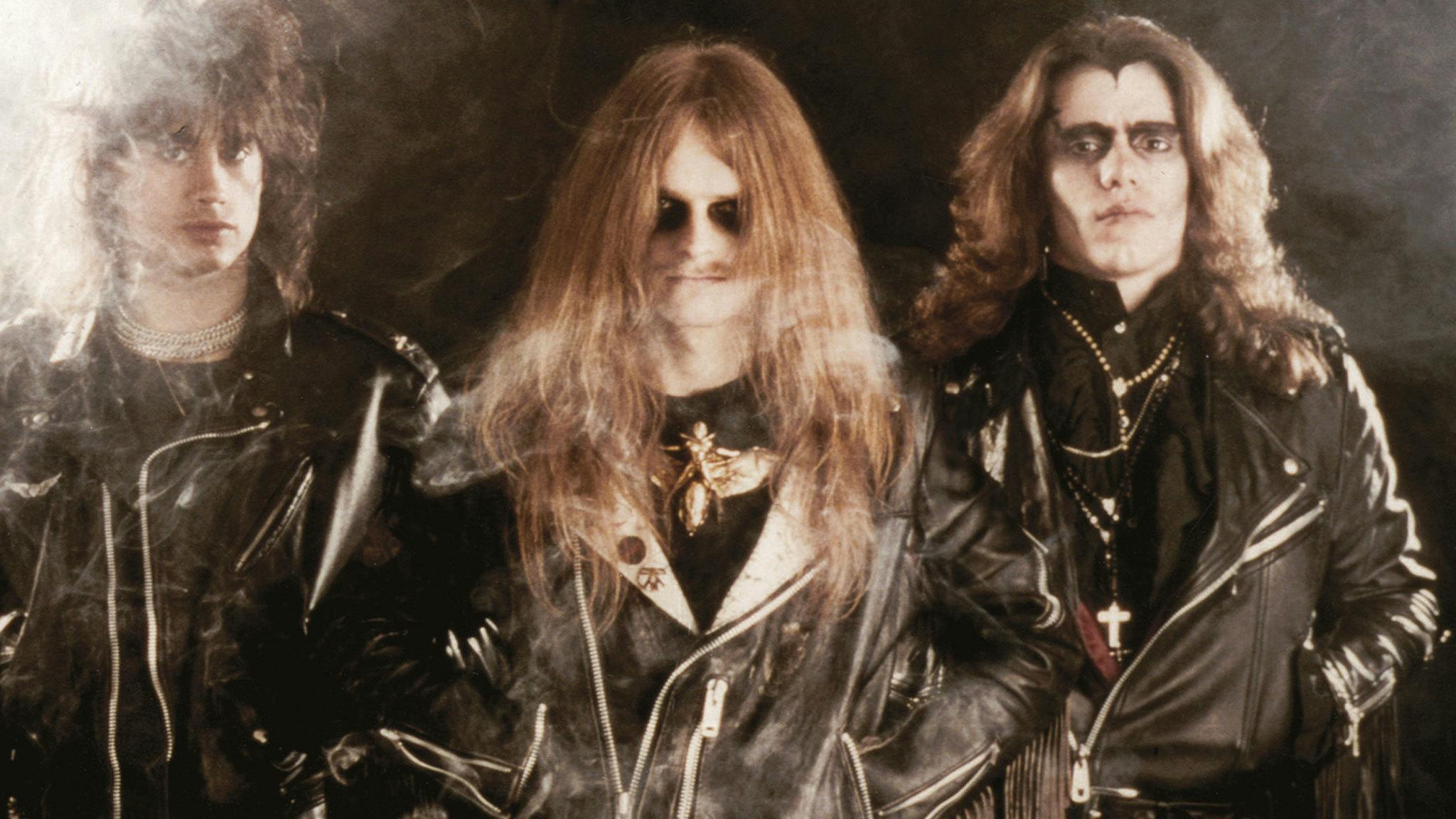The better reception to the album was vindicating. Journalists – and here Tom gratefully notes Kerrang! writers Malcolm Dome, Xavier Russell, Paul Elliott and Dante Bonutto – began to understand that they wanted to be a different kind of metal band. Not only that, for the first time the band began playing live, making their London debut at the Hammersmith Palais.
Returning to the studio to make Into The Pandemonium, any set of rules were firmly out the window. Describing the mood as “irrationally confident”, Tom also says that the surge of music from all over at the time, inside and out of metal, meant that it was easy to become inspired with every new thing he heard. It all went in, whether it came out metal or not.
“New wave that had arisen from punk was extremely ambitious,” he says. “Every time we would go to a record store and listen to a new wave album, there would be ideas we had never heard before. Every new wave album opened new horizons and showed you what was possible. And simply by that, it was extremely exciting, even if you didn't really like a particular album, you’d always go, ‘Wow, I never heard something like this before.’
“We hated these unwritten limitations in the metal scene,” he continues. “‘You cannot do this on an album, otherwise it's not metal…’ We thought, ‘Who writes these laws?’ Once we embarked on that path, Martin and I basically egged each other and continuously made each other more extreme in our endless discussions about these things. We just decided to abandon any restraint and not recognise any limits.”
The label didn’t see things the same way, though.
“I’m not overstating it when I say they hated it,” says Tom. “They hated every aspect of this album. And they let us know almost every day. I was mainly engaged in producing the album, as I wrote almost all of the music, and Martin was handling the phone calls, which wasn’t an easy job either. He was getting extreme negativity from Noise Records, threats that they’d cut the production, that they would withdraw the budget for the album, that they would send us home.”
Instead, Tom says they tried to sabotage production. When the label came to the studio to hear what the band had done, they told them in no uncertain terms: “Nobody is going to buy this piece of shit. Can you record an album like Exodus or Slayer?” As punishment, financial support for touring was cancelled, as was a planned video shoot with legendary British filmmaker Ken Russell. They changed their tune when the album was (correctly) hailed as a visionary artistic statement and began to sell, but by this point the band had parted ways with the label, and Tom says “the experience basically destroyed us”.
Nevertheless, both despite and because of the circumstances of its creation – all the negativity simply made them dig their heels in further – Into The Pandemonium is incredible and important. From its opening cover of new wave outfit Wall Of Voodoo’s Mexican Radio (“Weirdly, until I started doing interviews for this box, nobody ever asked me about that”), to its grandiose sweeps, to its gothic overtones and limitless horizon, it is also a unique work, the art of people who “burned all our bridges so that we had only ourselves”.
“I think the album stands, not least because the spirit of defiance,” says Tom. “On one hand, it’s artistic defiance, we didn’t accept any of those limits that were invisibly set in the metal scene. But we also didn’t accept the behaviour of the record company, the conduct of the company. And I think that spirit of defiance, I can hear it on the album. And it really fits the experimental nature of the album. That’s also why it’s authentic, and that’s why it still stands.”
